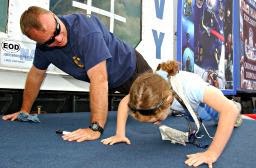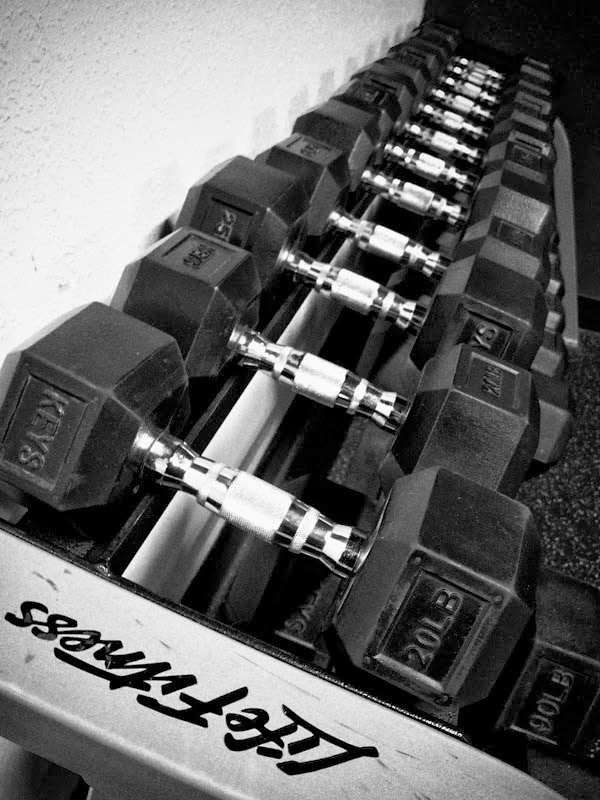Strength Training: Women’s Secret Sauce to Looking, Feeling Great
Strength Training isn’t just for body builders, fitness competitors and men. Building strength is for every mom, businesswoman and female over 30 who wants to look good, feel great and maintain or enhance her athletic capabilities. It’s the missing link to achieving the health and fitness results you want, and it’s absolutely necessary to combat the hormone imbalances, weight gain, and reduced muscle tissue and strength that are ever so common as women age into adulthood and eventually go through menopause.“A lot of women neglect weight training and only focus on cardiovascular work,” explains Stacy Adams, personal trainer and studio owner at Fitness Together Central Georgetown. “They're like hamsters spinning in a wheel running circles over and over again. They aren’t getting anywhere, they get frustrated and a lot are actually gaining weight.
“When you add strength training, your body will finally respond and you will begin to positively affect your bones, muscles and hormones. It’s the secret sauce to continuing to look fit all the way into your 50s, 60s and 70s.”
Build, Not Bulk Up, Muscle Tissue
A common misconception about weight training for women is that you are going to bulk up, look huge and build bigger muscle than you desire. However, women simply don’t have enough testosterone to create “manly bulk” and you have to follow a specific eating and weightlifting program to develop the type of muscles associated with bodybuilders.
“If you’re training with the right program and you have a trainer who customizes the program for you, you’re not going to bulk up,” says Adams. “It’s a part-time job to bulk up. You’re going to have to put a lot of work into it. It’s not just going to happen doing a full body strength workout twice a week.”
Instead, strength training is an integral component in slowing down the natural decline of muscle tissue in your body as you age and keeping your body’s metabolic rate at a higher level. A decline in muscle tissue creates a decrease in your basal metabolic rate, which is the amount of energy you expend daily at rest. Once your basal metabolic rate goes down, your body fat is going to increase and the actual number of calories you can consume will go down. The less muscle tissue you have, the less nutrition you can take in without an increase in activity.
Keeping your metabolic rate up through regular weight training helps keep your muscle tissue up, leading to stronger bone density and a body that is more metabolically active, says Adams. And another great thing about strength training is that regardless of what age you start with weight workouts, you can still experience the same type of muscle tissue response at any age. Whether you’re 20 years old or 80, you can have the same percentage of increase in muscle mass from strength training. You’re never too old to get started!
Increase Bone Density to Combat Osteoporosis
Improving bone density and building strong muscle mass go hand in hand, especially for women as they age. When you go through menopause and your estrogen levels decrease, your bone density is going to drop. And, since women don’t have as much muscle mass as men to start out with, bone density declines earlier in women than men as muscle size and strength decreases.
“Strength training is a must for women who want to increase or maintain muscle mass, as well as bone density,” advises Vanessa Ocasio, personal trainer and studio owner at Fitness Together Auburn. “Women shouldn’t shy away from it, but rather make it a core component of their weekly exercise routine.”
“As we get older, if we aren’t doing weight-bearing exercises that put a load on our bodies to make it work, then our bone density is going to decrease,” warns Adams. “Genetics and nutrition play into osteoporosis, too. But if you can do one thing to keep your bone health up, it should be strength training.”
Adams and Ocasio both agree that women should do strength training workouts at least two times per week. For women who are just exercising for health and not training for a specific sport, Ocasio recommends a mix of exercises that engage the entire musculature such as push-ups, pull-ups, squats, deadlifts, overhead presses, sit-ups, front/side planks, and some rotational movements like chops, lifts and Russian twists. These exercises can all be performed with free weights, medicine balls, cables and bands.
“You don’t have to perform all of these exercises during each workout,” advises Ocasio. “You may split your workouts into upper/lower body days, push/pull/lower body, or simply do whole body workouts every time. The point is to work to the right intensity and not over-train.”
Get a Handle on Your Hormones
Your hormones are the center of your body’s functionality and coordination. If you have a decline in lean tissue, an increase in body fat and your estrogen is declining, it’s going to put your hormonal levels at a low spot. This is when you start to see visual changes in your body that you aren’t used to and you question yourself about what is going on with your body.
“This is when women start to get frustrated and they start to feel like they’ve lost themselves,” shares Adams. “Some people automatically think they can’t do anything about it, which is absolutely not true. Getting into the right nutrition and training program that includes flexibility, cardiovascular, strength and functional training is what makes the difference.”
Enjoy Your New-Found Strength
Don’t be afraid to begin a strength training program to elevate your health and fitness levels, as well as complement your daily activities. Strength training doesn’t mean you’ll be body building. It means you will be more effectively and efficiently performing functionality training that uses movements to mimic your daily activities while keeping you fit and strong. The power of the after burn associated with strength training also will help you achieve your fitness and weight loss goals without spending a lifetime in the gym.
“When you strength train with explosive activity, you’re actually tearing muscle fibers,” explains Adams. “You experience an after burn during the muscle repair process, which is what creates energy consumption. Your metabolic rate increases because it has to repair the muscle fibers and it can stay higher for up to 72 hours after your strength training workout. So, results don’t actually happen in the training room; they happen during the rest and recovery period.”
Become a strong woman you can be proud of by getting into a strength training program that will get you the results you deserve. Look good and feel strong while increasing your body’s overall health and wellness with a customized strength training program.
©
2014 Fitness Together, Inc. All Rights Reserved. Powered by Fusionbox.
About | Contact | Franchise | Suppliers | History | Leadership | Nutrition Together |Sitemap | Privacy Policy | Terms of Use | Facebook | YouTube | Twitter | Linkedin









